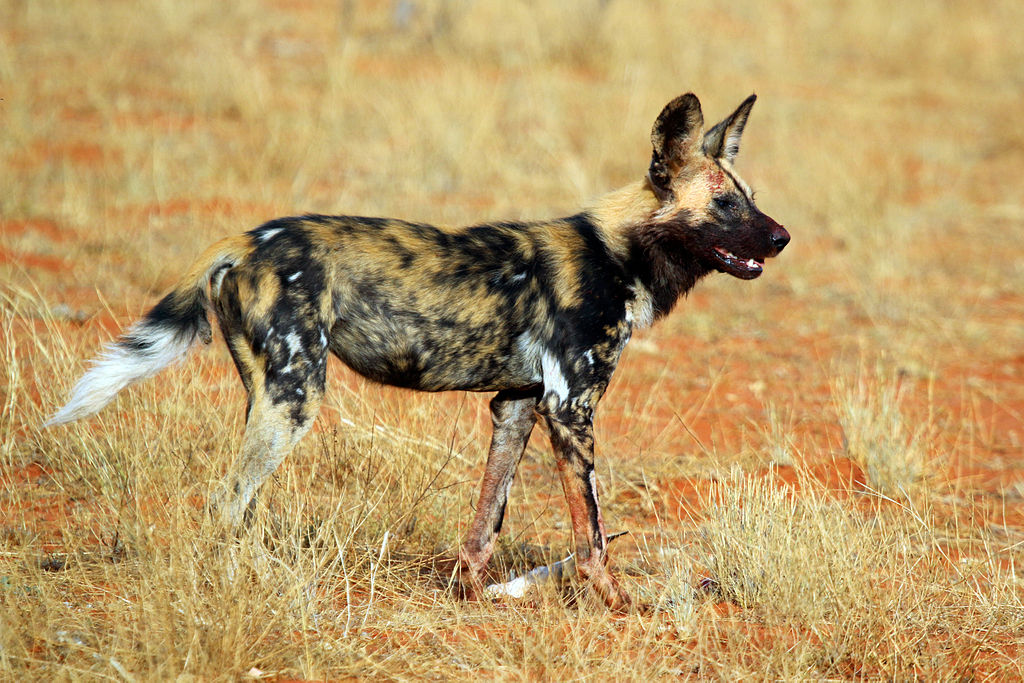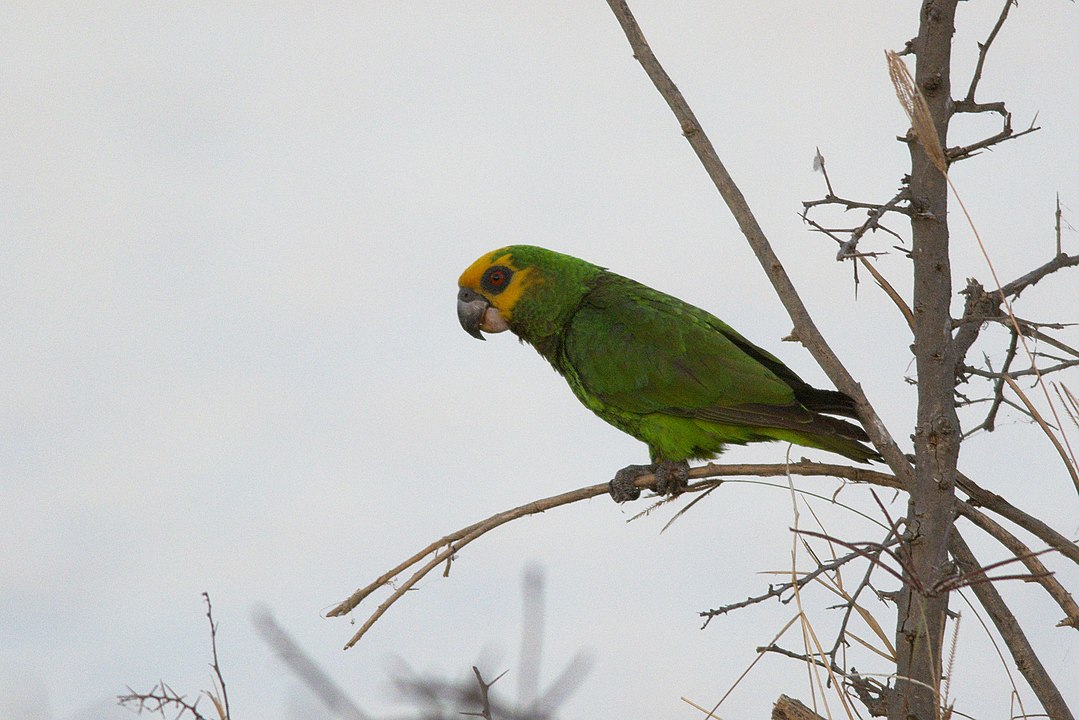Ethiopian Montane Forests
The ecoregion’s land area is provided in units of 1,000 hectares. The protection goal is the Global Safety Net (GSN1) area for the given ecoregion. The protection level indicates the percentage of the GSN goal that is currently protected on a scale of 0-10.
Bioregion: Lake Turkana-Sudd Grasslands, Bushlands & Forests (AT21)
Realm: Afrotropics
Subrealm: Horn of Africa
Ecoregion Size (1000 ha):
6,810
Ecoregion ID:
12
Conservation Target:
50%
Protection Level:
2
States: Ethiopia
The forests that remain on the rugged highlands of Ethiopia support high species richness and endemism. Large mammals, including lions, leopards, the endangered Ethiopian wolf, and a small population of the endangered African wild dog, find their homes in the remnants of this human dominated landscape.
The ecoregion surrounds the highlands of Ethiopia. The altitudinal limits of the ecoregion vary from one locality to another depending on annual precipitation. Transitional forests occur between 500 and 1,500 m altitude and have rainfall close to 2,000 mm per annum. These change into moist broadleaved forests at higher elevations, generally between 1,800 and 3,000 m, where rainfall is less than 1,700 mm per year. Humidity is often higher than would be expected, mainly due to cloud precipitation.

The African wild dog (Lycaon pictus) is the flagship species of the Ethiopian Montane Forests ecoregion. Image credit: Courtesy of Charles J Sharp
Temperatures vary according to the season and elevation, but mean maxima lie between 18o and 24oC, and mean minima are between 12oC and 15oC. During the Pliocene and Pleistocene there have been major climatic fluctuations. During ice age periods, glaciers formed on the peaks of the Ethiopian Highlands with vegetation similar to Eurasian tundra at lower altitudes.
The Afromontane forests include parts of the Harenna forest south of the Bale Mountains National Park, which is a type of forest that once covered a large part of Ethiopia and possibly Yemen. Coffea arabica is the dominant understory shrub and wild coffee is still harvested. At the lower levels of the forest, the tall, closed canopy consists of Warburgia ugandensis, Croton macrostachyus, and Syzygium guineense. At higher elevation, moist dense forest contains trees typical of eastern Africa, with Aningeria and Olea being dominant.
The ecoregion supports high species richness and endemic species. The tree Maytenus harenensis, for example, is endemic to the Harenna Forest, and is threated by logging and classified by the IUCN as Vulnerable. Strict endemic birds occur including Prince Ruspoli's turaco. Other birds considered near-endemic to the ecoregion include Abyssinian catbird and yellow-fronted parrot.

Yellow-fronted parrot. Image credit: Peter Wilton, Creative Commons
Mammals restricted to Ethiopia that occur in this ecoregion include Scott’s Mouse-eared Bat, the narrow-footed woodland mouse, and Menelik’s bushbuck. The Critically Endangered endemic Harenna Shrew is restricted to a small area of mixed montane evergreen tropical forest of just 4km2.
Other threatened mammals are lion, Swayne’s hartebeest, and a small population of African wild dogs. Endemic reptiles include the Bale Two-horned Chameleon and Harenna Hornless Chameleon. There are also endemic amphibians, including tree frogs (Clarke’s banana frog, Susana’s forest treefrog), ranid frogs (Harenna Forest grass frog), and caecilian (Sylvacaecilia grandisonae). The extent that current flora and fauna of this ecoregion survived in refugia during ice ages remains unknown.
It is difficult to assess how much of the ecoregion was formerly forested because humans have intensively occupied the highlands of Ethiopia for thousands of years. However, remnant ancient trees in enclosed church compounds and cemeteries provide evidence that forest was previously much more widespread. The largest areas of natural forest are found in the southwest where rainfall is highest.
Little habitat remains in its natural state, except in rocky ravines and other inaccessible areas. The ecoregion is poorly protected, although some small areas are contained in National Forest Priority Areas including: Anferara-Wedera, Bore-Anferara, Abobo-Gog, Godere, Belete Gera, Sigmo-Gibo, Yayu, Sele Anderacha. Many of these protected areas offer little protection to native flora and fauna.
All natural habitats in the ecoregion are highly threatened because they have been reduced to small patches, are severely fragmented, and poorly protected. Agriculture is the main threat, coupled with exploitation of trees for fuelwood and timber. In many areas poor agricultural methods and overgrazing have resulted in intense soil erosion.
The Harenna forest was previously a uniquely undisturbed habitat in Ethiopia, stretching without major human settlements from Terminalia woodland and low altitude montane forest though high altitude forest to Afroalpine moorland, crossing three ecoregions. It was traditionally used for gathering honey, coffee and other forest products as well as cattle grazing. An expanding urban population in this region, including a large flux of migrants in the past 20 years, now threatens this forest.
Priority conservation actions for the next decade:
- Strengthen community-based conservation to align local interest with biodiversity and ecosystem protection priorities.
- Implement conservation awareness programmes for local communities.
- Strengthen the level of protection, including enforcement and monitoring, in existing protected areas, such as the Bale Mountain National Park and Harenna forest.
-
-
- Friis, IB., Demissew, S. and van Breugel, P. 2010. Atlas of the Potential Vegetation of Ethiopia. Denmark: Spccialtrykkeriet Viborg a-s
- Mekonen, S., Chinasho, A., Berhanu, K. and Tesfaye, S. 2017. Threats and conservation challenges of wildlife in Harenna Forest, Harenna Buluk District, South East Ethiopia. International Journal of Biodiversity and Conservation. 9(7), pp.246-255.
- Wakjira, D.T., Frankfurt Zoological Society, D,Udine, F., Conservation Development Centre, Crawford, A., and IISD. 2015. Migration and conservation in the Bale mountains ecosystem. Manitoba, Canada: The international Institute for Sustainable Development.
-
Cite this page: Ethiopian Montane Forests. Ecoregion Snapshots: Descriptive Abstracts of the Terrestrial Ecoregions of the World, 2021. Developed by One Earth and RESOLVE. https://www.oneearth.org/ecoregions/ethiopian-montane-forests/
-




